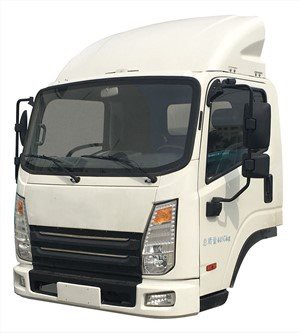Trash Can ASL: Understanding Sign Language and Its Use in Everyday Life

Introduction to Trash Can ASL
American Sign Language (ASL) is a visual language that relies on hand signs, facial expressions, and body movements. Among the many signs in ASL, “trash can” holds a specific meaning that is useful in everyday conversations, especially when discussing waste management or cleanliness. Understanding the “trash can” sign and its context in ASL can enhance communication not only for those who are hearing impaired but for anyone who interacts with the deaf community. This article will delve into the intricacies of the ASL sign for “trash can,” covering its meaning, variations, cultural importance, and practical usage tips.
The Importance of ASL in Everyday Communication
Understanding ASL’s Impact

ASL is not just a mode of communication; it serves as a bridge between hearing and deaf individuals. Knowledge of ASL signs like “trash can” promotes inclusivity and accessibility. It showcases respect and acknowledgment towards the deaf community and contributes to a more empathetic society.
Common Misconceptions About ASL
- ASL is not universal; each country has its version.
- ASL has its own grammar and syntax, different from English.
- Learning ASL can enhance cognitive skills and memory.
Understanding the Trash Can Sign in ASL

Defining the Trash Can Sign
The sign for “trash can” in ASL symbolizes a common object that holds everyday meaning. To execute this sign, individuals use specific finger placements and movements to convey the message clearly.
How to Sign “Trash Can” in ASL
To sign “trash can,” follow these steps:
- Use your dominant hand to form a flat handshape.
- Position your hand near your mouth.
- Move your hand downward towards your side, as if placing an item into a trash can.
Variations of the Trash Can Sign
While the basic sign remains consistent, regional variations may exist depending on local ASL dialects. It’s always beneficial to learn from local ASL users to grasp these nuances.
Practical Applications of the Trash Can Sign
In Daily Conversations
The “trash can” sign is practical in discussions about waste disposal, recycling, or environmental cleanliness. Here’s how it can be effectively integrated into conversations:
- Example 1: “Please throw this away” can be signed using the trash can sign to communicate that an object should be disposed of.
- Example 2: During a clean-up event, one might say, “Put the trash in the trash can” using the sign for “trash can” to direct others.
In Educational Settings
Teachers can incorporate the trash can sign in lessons about environmental science, instilling awareness about waste management in students. Using ASL can also encourage inclusive classroom environments.
In Community and Environmental Activism
When involved in community clean-up programs, using signs like “trash can” aids in non-verbal communication with more participants, regardless of their hearing abilities. This promotes teamwork and understanding.
Cultural Significance of ASL and the Trash Can Sign
Linking Communication with Culture
ASL is rich with cultural references and expressions linked to the deaf community. The “trash can” sign is a small but integral part of daily language that highlights important cultural practices surrounding waste and cleanliness.
How ASL Reflects Community Values
The way the “trash can” sign is used can reflect social values, illustrating a commitment to maintaining a clean environment. This is particularly important in deaf culture, where community gatherings often emphasize cleanliness.
Tips for Learning and Using ASL
Effective Strategies for Learning ASL
- Join ASL Classes: Enroll in beginner-friendly classes to get structured learning.
- Practice Regularly: Use the signs in daily life to aid retention.
- Engage with the Community: Participate in deaf community events for immersive learning.
Resources for Learning ASL
| Resource | Type | Description |
|---|---|---|
| ASL University | Website | A free resource offering ASL lessons and tutorials. |
| Deaf Community Centers | In-Person | Local centers that often provide classes and workshops. |
| Sign Language Apps | Mobile App | Interactive apps to practice signs at your own pace. |
Common Challenges in ASL Learning
Overcoming Communication Barriers
Learning ASL can come with difficulties, such as contextual understanding and physical dexterity. Knowing common challenges can help learners prepare and find effective solutions.
Building Confidence in Using ASL
- Start with simple signs like “trash can” before progressing to more complex phrases.
- Practice with friends or family members interested in learning ASL.
FAQ Section
What does the trash can sign look like in ASL?
The “trash can” sign involves using a flat hand to mimic the action of disposing of waste. Typically, you would start near the mouth and move your hand downwards.
Can anyone learn ASL?
Yes, ASL is accessible to everyone. Many resources, classes, and communities welcome anyone interested in learning.
Why is it important to know ASL?
Knowing ASL fosters inclusivity and allows for better communication with the deaf community, promoting social awareness and understanding.
Are there regional differences in ASL signs?
Yes, ASL can vary by region, just like spoken languages. It’s beneficial to learn from local experts to understand these variations.
How can I improve my ASL skills?
Regular practice, participation in ASL communities, and utilizing online resources can significantly improve your skills.

Is ASL the same as Signed English?
No, ASL has its grammar and structure, and it is different from Signed English, which follows English syntax closely.
